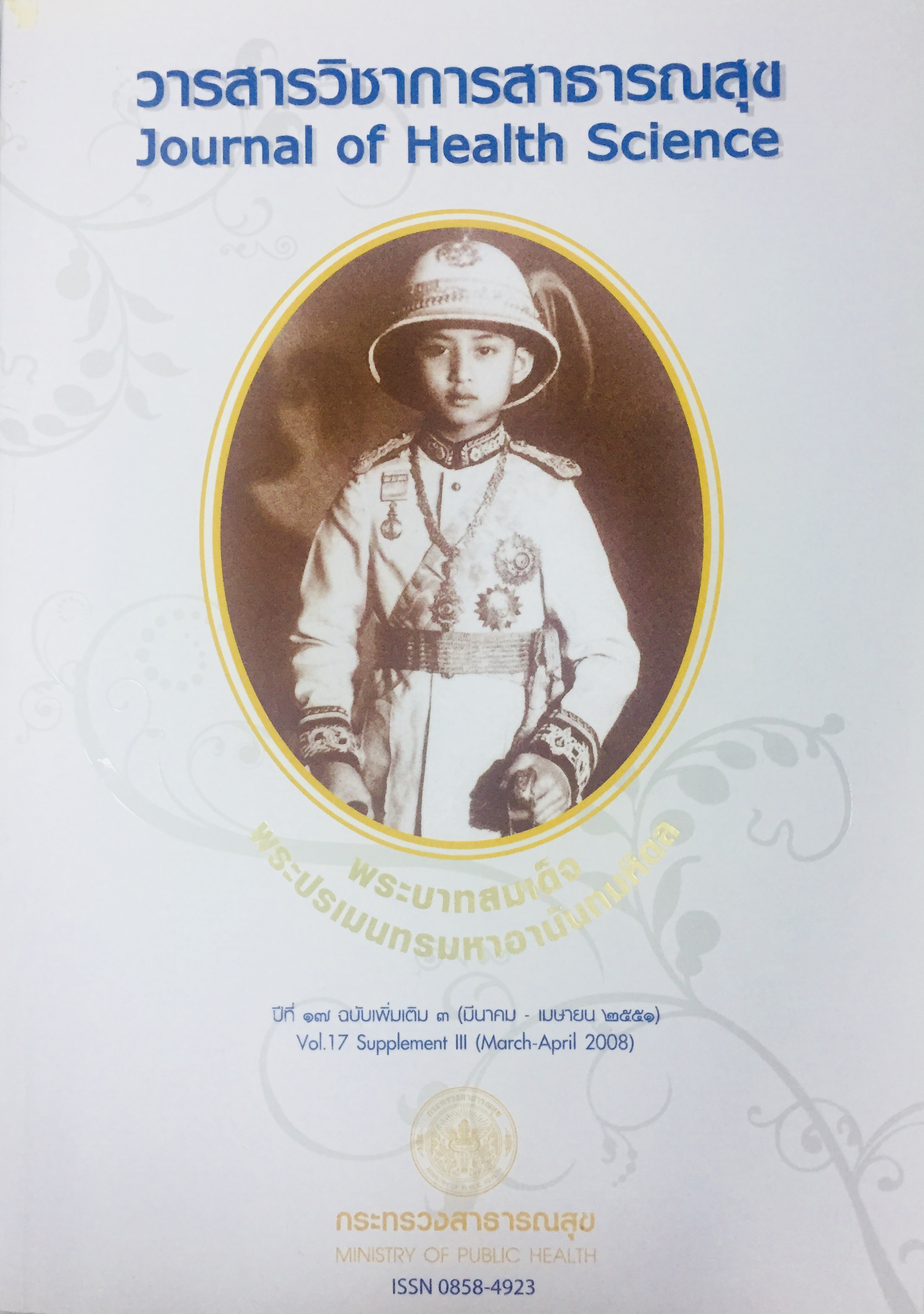การเปรียบเทียบผลการรักษากระดูกเหนือข้อศอกหักชนิดเลื่อนในเด็ก ระหว่างการใส่ลวด ยึดกระดูกโดยผ่าตัดเปิดแผลและไม่เปิดแผล ในโรงพยาบาลปทุมธานี
คำสำคัญ:
กระดูกเหนือข้อศอกหัก, เด็กบทคัดย่อ
กระดูกเหนือข้อศอกหักในเด็กเป็นการบาดเจ็บที่พบได้บ่อยในแผนกศัลยกรรมออร์โธปิดิกส์การรักษากระดูกหักชนิดที่มีการเลื่อนคือการดึงกระดูกให้เข้าที่แล้วใส่ลวดยึดกระดูกโดยวิธีการเปิดและไม่เปิดแผล ผ่าตัดแต่ยังไม่มีข้อสรุปที่แน่ชัดในการเลือกวิธีการรักษา การศึกษานี้เพื่อเปรียบเทียบผลการรักษาทั้ง 2 วิธี เพื่อเป็นประโยชน์ต่อแพทย์ในการตัดสินใจเลือกวิธีการรักษา
เป็นการศึกษาย้อนหลังในผู้ป่วยกระดูกเหนือข้อศอกหักในเด็กอายุน้อยกว่า 15 ปีในโรงพยาบาลปทุมธานีจำนวน 142 ราย ตั้งแต่ตุลาคม 2545-กันยายน 2550 รักษาด้วยการผ่าตัดแล้วใส่ลวดยึดกระดูก 78 ราย ดึงกระดูกให้เข้าที่แล้วใส่ลวดยึดกระดูก 64 ราย ศึกษาถึงผลการรักษาหลังผ่าตัดตาม modified Flynn's Cri- teria
พบว่าร้อยละ 97.4 หลังการผ่าตัดเปิดแผลแล้วใส่ลวดยึดกระดูกได้ผลดี และ ร้อยละ 95.3ในกลุ่มดึงกระดูกให้เข้าที่แล้วใส่ลวดยึดกระดูกได้ผลดี ส่วนผลการรักษาที่ไม่ดี ร้อยละ 2.6ในกลุ่มผ่าตัดเปิดแผลแล้วใส่ลวดยึดกระดูก และ ร้อยละ 4.7ในกลุ่มดึงกระดูกเข้าที่และใส่ลวดยึดกระดูก ศึกษาโดยวัดมุม carrying angle loss , elbow extension loss และ elbow flexion loss ไม่พบความแตกต่างอย่างมีนัยสำคัญทางสถิติในทั้ง 2 กลุ่ม (p > 0.05)
การรักษากระดูกเหนือข้อศอกหักชนิดเลื่อนในเด็กทั้ง 2 วิธีได้ผลไม่แตกต่างกันผู้วิจัยยังคงแนะนำให้ใช้วิธีการดึงกระดูกให้เข้าที่แล้วใส่ลวดยึดกระดูกก่อนหากไม่ได้ผลหรือมีข้อบ่งชี้จึงพิจารณาใช้วิธีการผ่าตัดเปิดแผลแล้วใส่ลวดยึดกระดูก
Downloads
ดาวน์โหลด
เผยแพร่แล้ว
วิธีการอ้างอิง
ฉบับ
บท
การอนุญาต
ลิขสิทธิ์ (c) 2018 วารสารวิชาการสาธารณสุข

This work is licensed under a Creative Commons Attribution-NonCommercial-NoDerivatives 4.0 International License.







